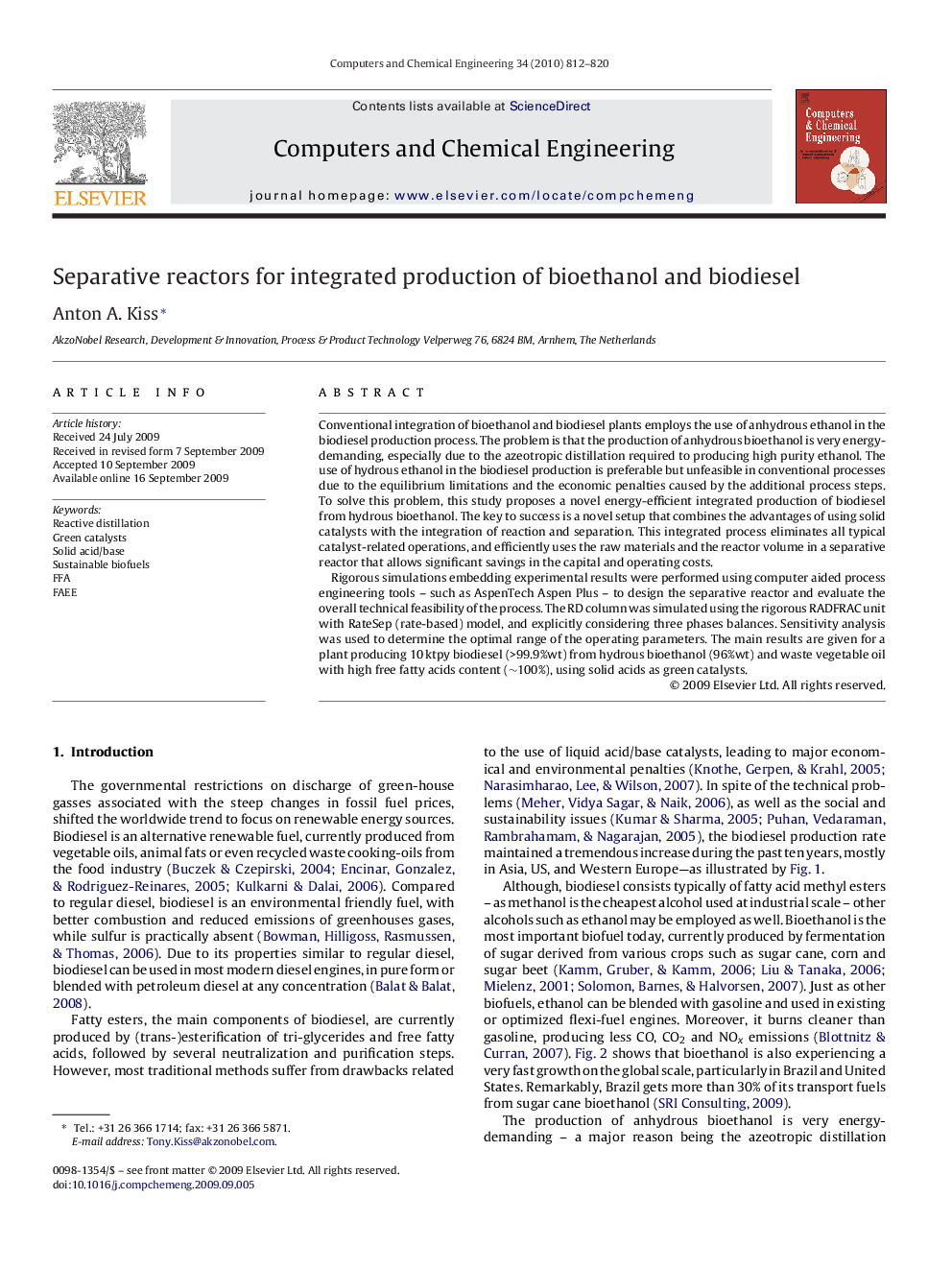| Article ID | Journal | Published Year | Pages | File Type |
|---|---|---|---|---|
| 173374 | Computers & Chemical Engineering | 2010 | 9 Pages |
Conventional integration of bioethanol and biodiesel plants employs the use of anhydrous ethanol in the biodiesel production process. The problem is that the production of anhydrous bioethanol is very energy-demanding, especially due to the azeotropic distillation required to producing high purity ethanol. The use of hydrous ethanol in the biodiesel production is preferable but unfeasible in conventional processes due to the equilibrium limitations and the economic penalties caused by the additional process steps. To solve this problem, this study proposes a novel energy-efficient integrated production of biodiesel from hydrous bioethanol. The key to success is a novel setup that combines the advantages of using solid catalysts with the integration of reaction and separation. This integrated process eliminates all typical catalyst-related operations, and efficiently uses the raw materials and the reactor volume in a separative reactor that allows significant savings in the capital and operating costs.Rigorous simulations embedding experimental results were performed using computer aided process engineering tools – such as AspenTech Aspen Plus – to design the separative reactor and evaluate the overall technical feasibility of the process. The RD column was simulated using the rigorous RADFRAC unit with RateSep (rate-based) model, and explicitly considering three phases balances. Sensitivity analysis was used to determine the optimal range of the operating parameters. The main results are given for a plant producing 10 ktpy biodiesel (>99.9%wt) from hydrous bioethanol (96%wt) and waste vegetable oil with high free fatty acids content (∼100%), using solid acids as green catalysts.
